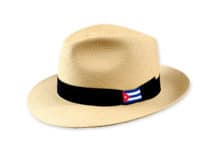
Contents
The Cuban Guayabera characteristic of the Cuban peasantry.
In Cuba the Guayabera is a garment that is part of the historical traditions of that nation.
Although at present this shirt is used as elegant clothing in important events, formal and diplomatic ceremonies, it is characteristic of the peasantry, at least for several years.
These garments were initially used only by men who worked on the land, but today there are also designs for women, both in shirts and dresses, either short or long sleeves.
Among the main characteristics of this wardrobe are adornments with pleats that are located in two rows at the front and one at the back, it has four pockets, twenty buttons and they are generally embroidered to embellish them and give them more lucidity.
Although in the beginning they were generally made of cotton or thread, today they are also sewn with linen, silk or polyester fabrics.
Guayaberas are used in Cuba, but also in other countries of the American continent, where they are known as guayabana, chacabanas, shirt and other denominations.
This Cuban garment and its history in Cuba.
Still today there is no exact story about the origin of this garment in the world, and neither in Cuba.
There are several versions of how the island was introduced, the only thing they have in common is that most grant the privilege to the city of Sancti Spiritus.
One of these stories has to do with an immigrant who arrived from Spain and set up a tailor shop in the town where shirts with pockets somewhat similar to the current guayabera were sold.
Another suggests that a peasant also of Hispanic origin told his wife to sew him comfortable clothes for agricultural work and that is how the garment came about.
But since the world dispute over the origin of the garment is between several nations, the arrival of that shirt in Cuba, the Dominican Republic, through the patriot Máximo Gómez, is also attributed to him.
The truth is that there are several versions, but while it is confirmed which is the most accurate, the guayabera is still there as a tradition of the Caribbean island. No matter where he came from, he did it to stay.
The true story about why this peculiar model of shirts is called a guayabera is not well defined either.
Some say that they have studied the subject that was initially named yayabera because it was used in the land of the Yayabo River.
Due to the breadth of their pockets, some peasants or peasants, as they are also known in Cuba, used to put guavas in it to take them home and there, according to some, the current name of the popular garment emerged.
In its beginnings the model was something different from the current one, little by little some tailors and seamstresses were making modifications to embellish it and give it commercial purposes, so much so that in the 20th century it went from being a peasant garment in the work of the land to be used by the high aristocracy, with better quality fabrics of course.
Back in 1955 in Sancti Spiritus, supposed city of origin of the garment in Cuba, they designated the First of July as Guayabera Day.
This date was chosen because it was the birthday of Juan Cristóbal Napoles Fajardo, the Cucalambé, that popular Decimist who wrote an ode to that garment that he also wore.
Currently in Sancti Spiritus for that date, the city echoes the exhibition of various cultural and artistic modalities to pay tribute to its prestigious garment and the cultural and historical traditions of the town.
The current Cuban Guayabera.
In 2010 in Cuba it was officially established, and this is stated in the Gazette of the Republic, as a garment for officials who participate in diplomatic ceremonies.
Sancti Spiritus and its Guayabera House Museum.
As history attributes the origin of the popular shirt in Cuba to the land of Yayabo, currently in that city there is a Guayabera House Museum where the largest collection of that garment on the island is exhibited.
In the cultural institution, inaugurated in 2012, there are more than 200 pieces that have been used by political personalities, medical sciences, culture and other social aspects.
Among the many shirts that are shown, the one used by Fidel Castro Ruz in 1994 at the Ibero-American Summit in Cartagena de Indias stands out, as well as one that was specially designed for Venezuelan President Hugo Chávez.
Others that also attract visitors to the House Museum are the writer Gabriel García Márquez, the dancer Alicia Alonso, the painter Oswaldo Guayasamín, the athletes Ana Fidelia Quiros and Teófilo Stevenson, and the musician Compay Segundo, among other artists and personalities.
This institution is the only one of its kind in the country dedicated to the national garment and its exhibition samples change every quarter of the year.
In that enclosure there is also a space dedicated to the making of these very Cuban garments.







